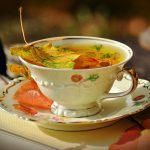For whiskey lovers, it’s pretty common knowledge that there are different whiskey types on the market. If you are just starting out exploring these flavours, you might not know about the differences or even how to tell them apart. Here’s what you know about common types of whiskey and how each of them differ from one another.
Gaining and understanding of whiskey
First things first, before discussing whiskey types, it’s important to understand how whiskey is made. Whiskey is a kind of alcohol which is made from grain mash which passes through the fermentation process. Of course, there are some types of whiskey that are made from corn and not all whiskeys need to be aged in order to create a delicious and refined beverage. No matter the bottle, whiskey is always distilled at 40 – 94,8% alcohol by volume. The differences between each type depends largely on the types of grains that are used.
What is Scotch?
Scotch is a perfect example of one of the most popular whiskey types made from grain mash. It is made from malted barley and well-known producers only use barley, water and yeast to create a perfectly balanced drink. In some cases, other whole grains are added along with some caramel colouring. No fermentation additives are added during the production of Scotch. In order for a whiskey to be classified as Scotch it must be aged in oak casks and it will need to remain in these casks for 3 years at least. The alcohol volume must be less than 94,8% and, as the name suggests, it needs to be made in Scotland.
How about Bourbon?
Bourbon is another one of the most popular whiskey types. Particularly in the United States. The grain mixture used to make it must contain at least 51% corn. Fermentation can be spurred on by adding mash from an older batch which is already fermenting. This is referred to as sour mash. Bourbon must be distilled to 80% alcohol at the most and it should have no more than 52,5% when placed in the casks to age. It must be aged in new charred oak barrels and there is no minimum amount of time that it needs to age. Of course, many agree that 2 years is a good minimum if you want a quality beverage. If may not contain any kind of flavours or colouring. Blended Bourbon may contain colouring and flavours of other spirits but it must be at least 51% straight Bourbon. If blended, the age of the batch is determined by the age o the youngest whiskey added to the mix.
Special cases
A very popular whiskey is Jack Daniels and it is marketed as Tennessee Whiskey. These whiskeys are made by using charcoal filters and this is why they are unique. These whiskey types have a very distinct taste which is obtained by using such filters and, while many people love it, there are those who prefer Scotch or other types instead.
Rye whiskey
As far as rye whiskey types are concerned, there are different rules for different countries. In Canada, they only need to contain a small portion of rye while, in the United States, they must contain at least 51% rye. It must also be aged for at least 2 years if you wish to sell it as straight rye.
Irish whiskey
If you enjoy an Irish Coffee, you know just how special Irish whiskey is. Just like Scotch, Irish whiskey needs to be made in Ireland and it should have an alcohol volume no higher than 94,8%. It can be made from a mix of grains but, if more than one grain is used, it must be marketed as blended. It also needs to be aged or at least 3 years in wooden casks.
Irish whiskey also has some fairly relaxed rules. Apart from the fact that it must be produced in Ireland, it can be made from a mixture of cereal gains and it must have an alcohol by volume of no more than 94,8%. If two or more grains are used, it must be labelled as blended and it does need to be aged in wooden casks for at least three years.
These are the main whiskey types that you are likely to encounter as you taste test your way to figuring out which one or ones you enjoy the most. If you are ever unsure about the best whiskey or your taste buds, it’s a good idea to ask your friends and family for recommendations. Once you have a few options, buy small bottles of each type and perform your own tasting. Remember to take into account the aroma and not just the flavour when tasting.


Be the first to post a comment.